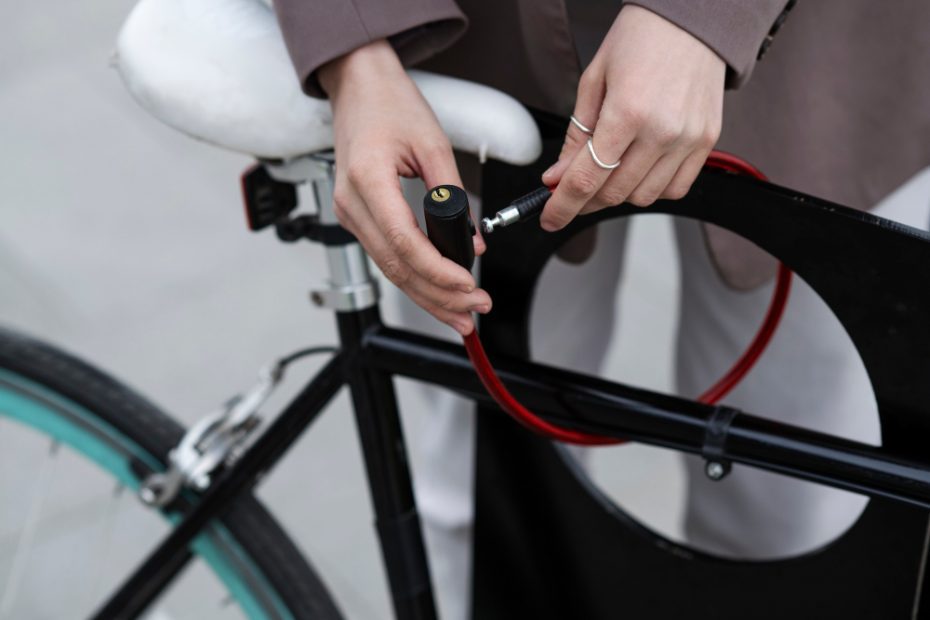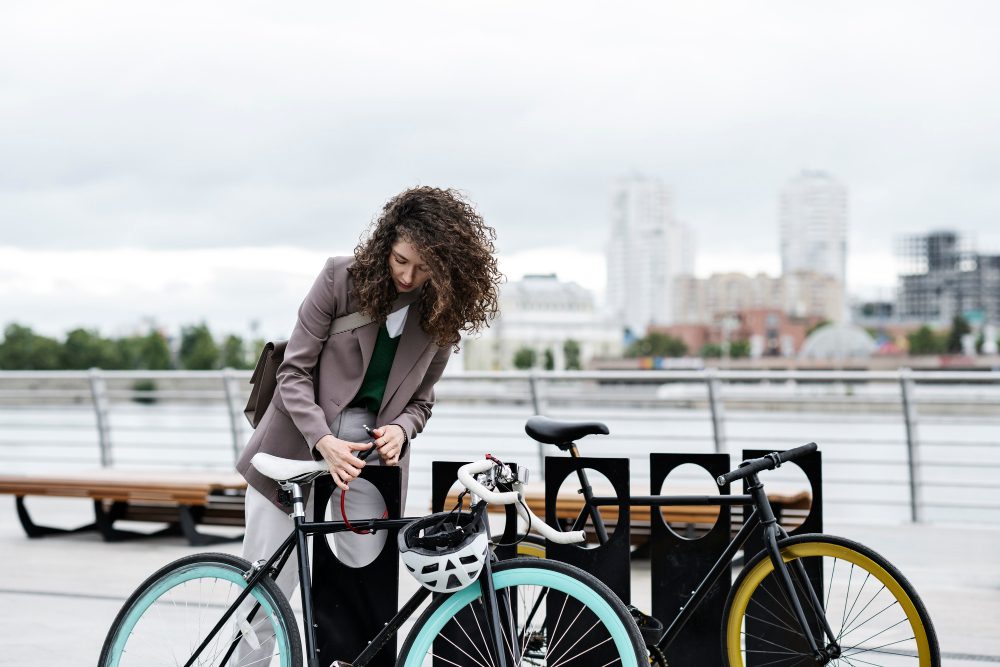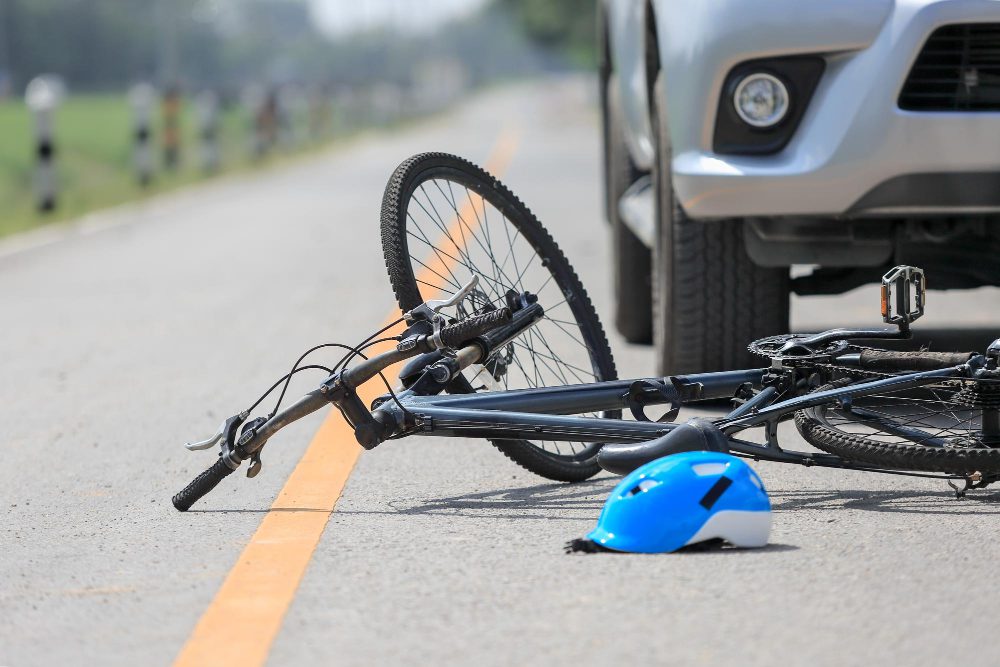Do you lock your road bike?
As a road cyclist, one of the most important things you need to consider is the security of your bike. Whether you use it for commuting, leisurely rides, or intense training sessions, your road bike is an investment that should be protected. This article will explore the importance of locking your road bike, the types of locks available, and provide tips on how to choose the right lock for your needs.
The Importance of Locking Your Road Bike
According to the UK’s Office for National Statistics, there were over 94,000 reported bicycle thefts in 2019. In urban areas, where road bikes are often targeted due to their high value, the risk of theft is even higher. Locking your road bike is essential to deter potential thieves and protect your investment.
“A good lock is the first line of defense against bike theft.”
One of the simplest and most effective ways to secure your bike is to use a high-quality lock. A strong lock can act as a powerful deterrent, making it less likely for thieves to attempt to steal your road bike.
The Different Types of Locks
When it comes to choosing a lock for your road bike, there are several options available:
| Lock Type | Pros | Cons |
|---|---|---|
| U-lock | Highly secure and resistant to cutting | Can be heavy and bulky to carry |
| Chain lock | Flexible and versatile | May not offer as much security as a U-lock |
| Folding lock | Compact and easy to carry | Not as strong as a U-lock |
| Cable lock | Lightweight and easy to use | Can be easily cut by bolt cutters |
It’s important to choose a lock that suits your specific needs. Consider factors such as the level of security required, the weight and portability of the lock, and the potential risks in your area.
Tips for Choosing the Right Lock
When selecting a lock for your road bike, keep the following tips in mind:
- Invest in quality: Don’t compromise on the quality of the lock. Look for sturdy materials and reputable brands.
- Choose a lock with a Sold Secure rating: The Sold Secure certification is an independent rating system that assesses the strength and durability of locks.
- Lock both the frame and wheels: Secure your bike by locking both the frame and wheels to a solid object.
- Lock in a visible and well-lit area: Thieves are less likely to target a bike that is easily visible to others.
Remember, no lock is completely foolproof, but using a combination of secure locking techniques and a high-quality lock can greatly reduce the risk of theft.
Do road bikes get stolen?
When it comes to bike theft, road bikes are unfortunately not exempt. In fact, road bikes are often targeted by thieves due to their higher value and popularity among cyclists. It is essential for road bike owners to take precautions to prevent theft and protect their valuable equipment.
Why are road bikes targeted?
Road bikes are known for their lightweight frames and high-performance components, making them attractive targets for thieves. These bikes can be expensive, with some models costing thousands of pounds, making them a lucrative target for criminals. Additionally, road bikes are popular among cycling enthusiasts, meaning there is a demand for stolen road bikes in the second-hand market.
The importance of locking your road bike
Locking your road bike is crucial to deter thieves and increase the chances of recovery if it does get stolen. Always use a high-quality lock that is difficult to break, such as a sturdy U-lock or heavy-duty chain lock. Additionally, consider using a secondary lock to secure the wheels and saddle.
“Investing in a good lock is much cheaper than replacing an entire road bike.”
Tips for preventing road bike theft
- Always lock your road bike, even if you’ll only be away for a few minutes.
- Choose well-lit, populated areas for locking your bike.
- Lock your bike to a secure and immovable object, such as a bike rack.
- Consider registering your road bike with a national bike registry or marking it with a unique identifier.
- Keep a record of your road bike’s serial number and take clear photos of it for identification purposes.
What to do if your road bike is stolen
If your road bike is stolen despite taking precautions, act quickly:
- File a police report and provide them with all the necessary information, including the serial number and photos of your bike.
- Notify local bike shops, as thieves may attempt to sell stolen bikes in the area.
- Check online marketplaces and social media platforms for any listings that match your stolen road bike’s description.
- Report the theft to your insurance company if your road bike is covered under a policy.
Remember, prevention is key when it comes to road bike theft. By taking the necessary precautions and remaining vigilant, you can significantly reduce the risk of your road bike being stolen.
Do bike thieves pick locks?
When it comes to protecting your road bike from theft, one question that often arises is whether or not bike thieves actually pick locks. While there is no definitive answer to this question, it is important to understand the techniques used by bike thieves and the vulnerabilities of different types of locks.
Types of bike locks
Before diving into the topic of bike thieves and lock picking, let’s first take a look at the different types of locks available on the market:
- U-locks: These are typically made of hardened steel and offer a high level of security.
- Cable locks: These locks are lightweight and flexible, but they are also more susceptible to cutting.
- Folding locks: These locks are compact and can be folded into a small size for easy storage.
- Chain locks: Chain locks provide flexibility and durability, but they can be heavy and bulky to carry around.
Techniques used by bike thieves
Bike thieves employ various techniques to steal bikes, and lock picking is just one of them. Other methods include leveraging tools like bolt cutters, angle grinders, or even brute force to break the lock.
However, it is worth noting that skilled bike thieves may indeed possess the ability to pick certain types of locks. They use specially designed lock-picking tools to manipulate the lock’s mechanisms and gain access to the bike.
Choosing the right lock
To protect your road bike effectively, it’s crucial to choose the right type of lock and use it properly. While no lock is completely impervious to thieves, certain locks offer higher levels of security than others.
Remember, a strong lock alone is not enough; you must also use it correctly. Lock your bike to a fixed object in a well-lit area and make sure all removable parts are properly secured.
Additional security measures
Aside from a good quality lock, there are other security measures you can take to deter bike thieves:
- Register your bike: Keep a record of your bike’s serial number and register it with the police or a bicycle registration service.
- Use multiple locks: Layering different types of locks can provide an added level of security.
- Consider GPS tracking: If your budget allows, investing in a GPS tracking device can help in recovering your bike if it does get stolen.
In conclusion, while bike thieves may have the ability to pick certain types of locks, they usually opt for easier methods such as cutting or breaking them.
| Type of Lock | Level of Security |
|---|---|
| U-lock | High |
| Cable lock | Medium |
| Folding lock | Medium |
| Chain lock | High |
What type of bikes get stolen the most?
When it comes to bicycle theft, certain types of bikes are more attractive to thieves than others. Understanding which bikes are commonly stolen can help you take appropriate measures to protect your two-wheeled investment. Here are some insights into the types of bikes that get stolen the most:
1. High-end Road Bikes
High-end road bikes, with their sleek design and expensive components, are a prime target for thieves. These bikes are often lightweight, making them easier to snatch and escape with. Additionally, their retail value makes them a lucrative steal for criminals.
2. Mountain Bikes
Mountain bikes, known for their off-road capabilities and durable frames, are also a popular target for thieves. The versatility and high resale value of these bikes make them an attractive option for both recreational riders and criminals alike.
3. Hybrid Bikes
Hybrid bikes, which combine features of road bikes and mountain bikes, are also frequently stolen. Their practicality for commuting and leisure riding make them a desirable choice for thieves looking for an everyday bike.
4. Electric Bikes
With the rise in popularity of electric bikes, it’s no surprise that they have become a target for theft. The high cost and increasing demand for these bikes make them an appealing choice for criminals seeking a quick profit.
5. Folding Bikes
Folding bikes, designed for easy storage and transportation, are another common target for thieves. Their compact size makes them convenient to steal and hide, making them an attractive option for opportunistic criminals.
“Bike thieves often target certain types of bikes due to their high resale value and popularity among riders.”
To further illustrate the prevalence of bike theft, here is a table showing the percentage of each bike type reported as stolen in the UK last year:
| Bike Type | Percentage Stolen |
|---|---|
| Road Bikes | 35% |
| Mountain Bikes | 25% |
| Hybrid Bikes | 20% |
| Electric Bikes | 15% |
| Folding Bikes | 5% |
In conclusion, high-end road bikes, mountain bikes, hybrid bikes, electric bikes, and folding bikes are the types of bicycles that get stolen the most. It’s crucial to take appropriate security measures, such as using strong locks and parking in well-lit areas, to deter thieves and protect your valuable bike.
Why is bike theft so common?
When it comes to bike theft, the United Kingdom unfortunately tops the charts. The high number of reported incidents begs the question: why is bike theft so common in the UK?
Poor bike security
One reason for the prevalence of bike theft is the lack of proper security measures. Many cyclists fail to use strong locks or secure their bikes properly, making them easy targets for thieves. According to a recent survey, only 41% of UK cyclists use a high-security lock, such as a D-lock or a heavy-duty chain.
Lucrative market for stolen bikes
The demand for stolen bikes makes bike theft an attractive proposition for criminals. Stolen bikes can be sold quickly and easily, either through online platforms or at local markets. They are often sold for a fraction of their original value, making them appealing to potential buyers.
Lack of police resources
The limited resources dedicated to combating bike theft is another factor contributing to its prevalence. The police have numerous other priorities, and bike theft may not receive the attention it deserves. As a result, thieves may feel emboldened and less deterred from targeting bikes.
Inadequate bike parking facilities
The lack of secure bike parking facilities in public spaces is another reason why bike theft is so common. Cyclists often have to resort to locking their bikes to lampposts or railings, which are not always the most secure options. Without proper infrastructure, it becomes easier for thieves to remove bikes unnoticed.
Opportunistic thieves
Bike theft can also be attributed to opportunistic thieves who take advantage of careless owners. Leaving a bike unattended, even for a short period, can provide an opportunity for thieves to strike. The convenience and ease with which bikes can be stolen make them a prime target for criminals on the lookout for quick thefts.
“Bike theft is not just a crime, it’s an industry.” – British Transport Police
Combating bike theft
To address the issue of bike theft, it is crucial for cyclists to prioritize bike security. This means investing in high-quality locks, utilizing secure bike parking facilities whenever possible, and adopting best practices for deterring thieves. Moreover, raising awareness about bike theft and advocating for increased police resources dedicated to combating this type of crime can help reduce its prevalence.
Overall, bike theft remains a persistent problem in the UK due to a combination of factors, including inadequate security measures, a lucrative market for stolen bikes, limited police resources, insufficient bike parking facilities, and opportunistic thieves. By taking proactive steps to enhance bike security and advocating for change, we can work towards minimizing the occurrence of bike theft and protecting our precious cycles.



